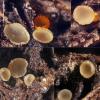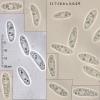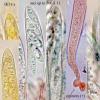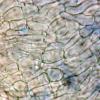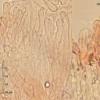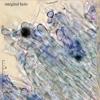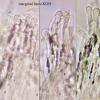
17-01-2026 19:35
Arnold BüschlenHallo, ich suche zu Cosmospora aurantiicola Lite

08-12-2025 17:37
 Lothar Krieglsteiner
Lothar Krieglsteiner
20.6.25, on branch of Abies infected and thickened

16-01-2026 00:45
Ethan CrensonHi all, On decorticated hardwood from a New York

10-01-2026 20:00
Tom SchrierHi all,We found picnidia on Protoparmeliopsis mur

13-01-2026 07:28
 Danny Newman
Danny Newman
Chlorociboria glauca on indet. decorticate logThe

15-01-2026 15:55
 Lothar Krieglsteiner
Lothar Krieglsteiner
this one is especially interesting for me because

13-01-2026 08:43
 Danny Newman
Danny Newman
Tricladium varicosporioides on indet. decorticate
Another fungus on Tilia wood
Enrique Rubio,
01-01-2013 18:10
Together with the ascomata of Psilocistella/Psilachnum species on Tilia wood that turns reddish with ammonia vapour (see the macrophoto) they were another witish cupulate ascomata with big 8-spored asci IKI (-) negative and croziers (+) positive. IKI with KOH pret. is negative (-) too.
The marginal hairs are very agglutinated and very difficult to segregate. Initially they seem to be smooth but the end cell is very finelly verrucose in KOH. For it, my impression is that this fungus could be a Cistella species that I don't know.
What do you think?
Many thanks again
Hans-Otto Baral,
01-01-2013 18:30

Re : Another fungus on Tilia wood
I once had a Cistella on Tilia bark of an attached branch, together with a strange and new Orbilia (O. jurana) on the calcareous Schwäbische Alb. It has also inamyloid asci but spores much smaller (7-12 x 2-2.8), so I identified it as Cistella cf. mali. Yours has too large spores for mali.
One with such large spores on Populus bark (HB 6930) has faintly hemiamyloid apical rings.
Zotto
One with such large spores on Populus bark (HB 6930) has faintly hemiamyloid apical rings.
Zotto
Guy Garcia,
01-01-2013 18:31
Re : Another fungus on Tilia wood
Bonjour Enrique,
voir peut-être du côté de "Cistella" perparvula mais tes spécimens présentent des spores et des asques plus grands.
Amitiés, Guy
voir peut-être du côté de "Cistella" perparvula mais tes spécimens présentent des spores et des asques plus grands.
Amitiés, Guy
Enrique Rubio,
01-01-2013 21:47
Re : Another fungus on Tilia wood
Thank you to both.
So, Cistella sp.
So, Cistella sp.


